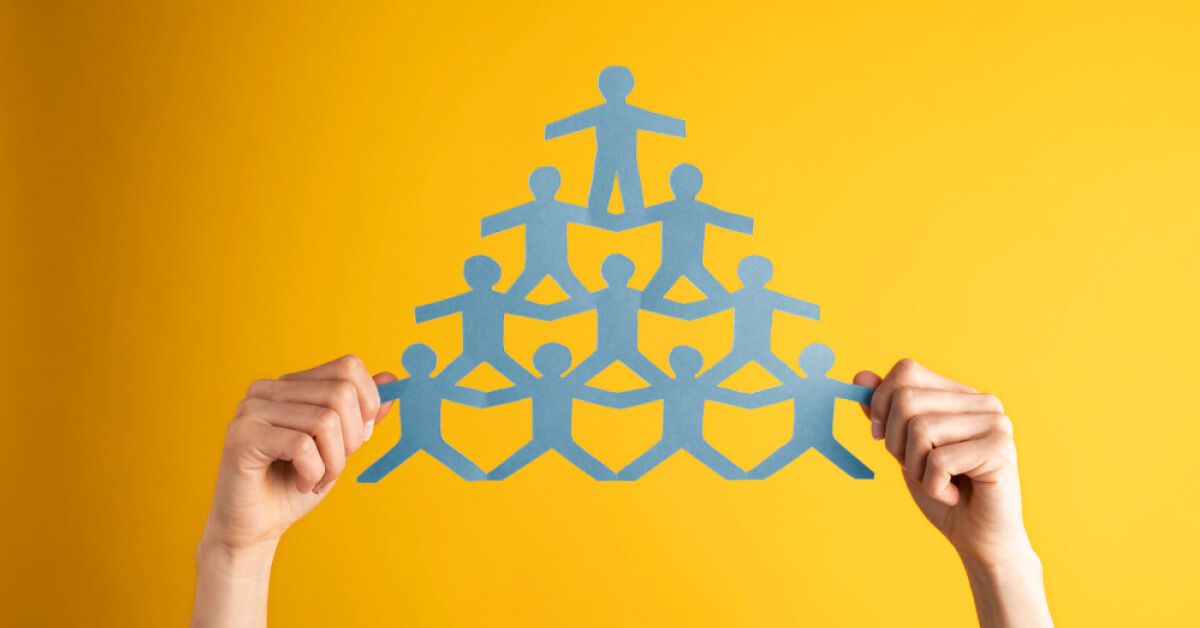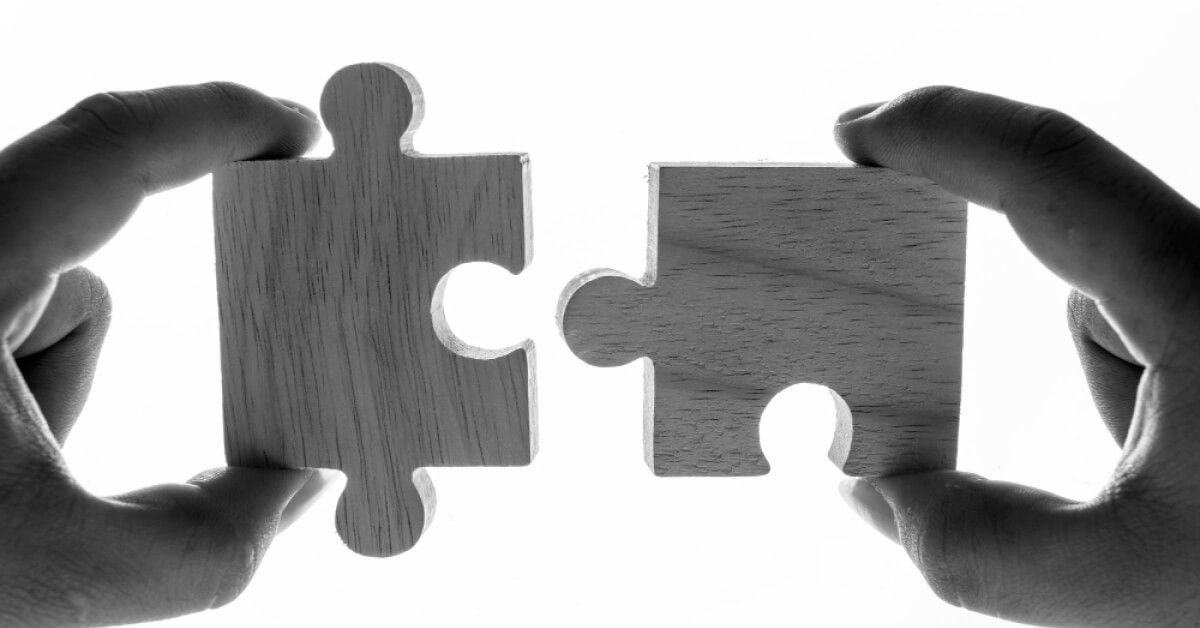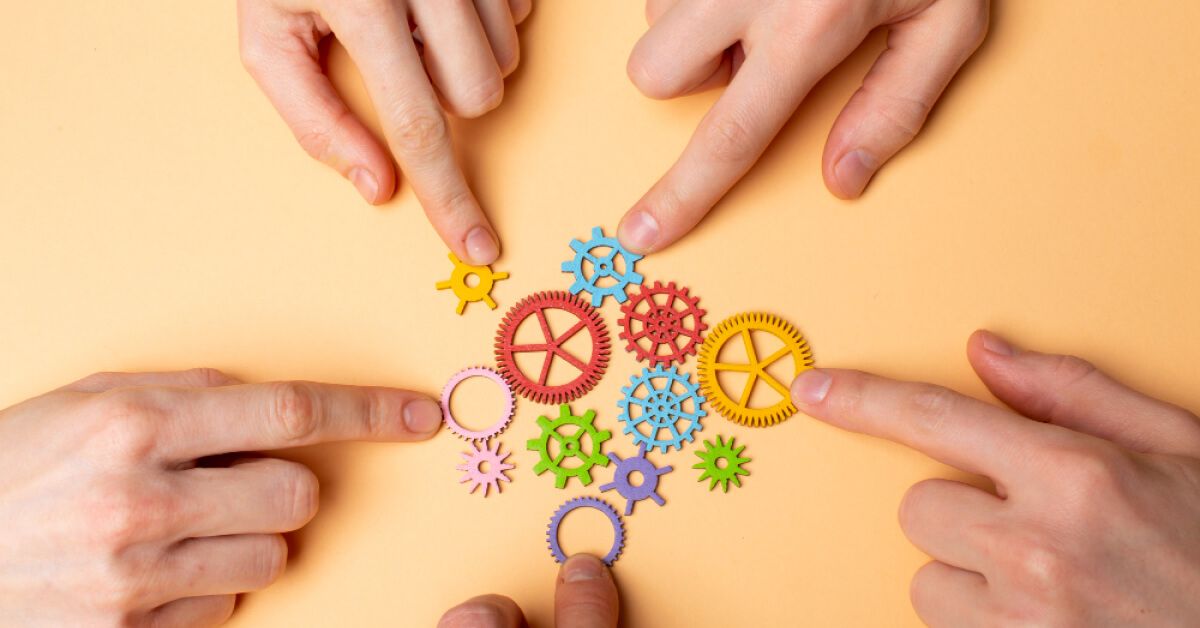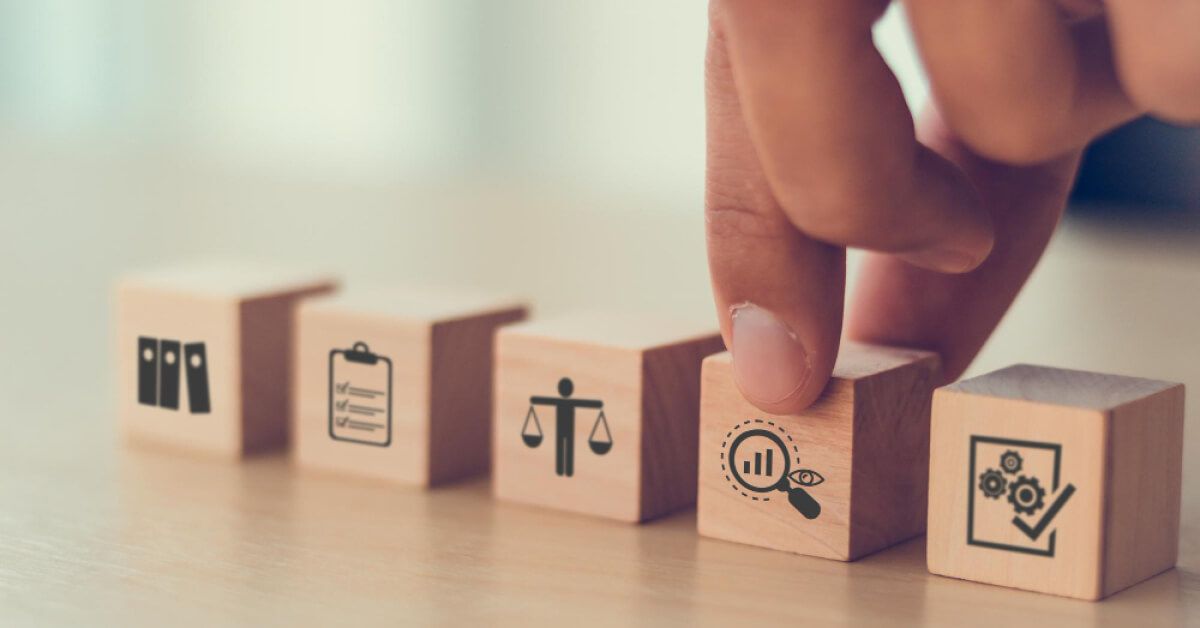Why building team synergy is important: Examples & questions

It’s a relay race. The air is thick with anticipation. The runner sprints toward their teammate, baton in hand, every step measured, every breath controlled. But just as they reach out—hesitation. A fumble. The baton clatters to the ground. The race was lost, not because they weren’t fast enough, but because they weren’t in sync.
This is how teams fall apart—not in grand, dramatic failures, but in the small moments where trust wavers, communication breaks, and alignment slips. Deadlines become bottlenecks, projects stall, and frustration builds. A team isn’t just a group of skilled individuals; it’s a system where every piece must move seamlessly. When that connection is strong, momentum is unstoppable.
So, how do you build a team that doesn’t drop the baton? How do you create a synergy that turns collaboration into a competitive advantage? Let’s break it down, step by step.
TL;DR
What is team synergy?

TL;DR
Team synergy is when collaboration, trust, and shared goals align to produce outcomes greater than individual efforts. It fosters creativity, efficient problem-solving, and innovation—making it essential for high-performing teams and a key driver of success in modern workplaces.
Team synergy is the dynamic result of collaboration, where the combined efforts of a group achieve more than the sum of individual contributions. It represents the harmonious interaction of team members, fueled by shared goals, effective communication, and complementary skills. In a synergistic team, creativity thrives, problem-solving becomes more efficient, and productivity soars.
The team's collective energy and enthusiasm drive innovation and excellence, producing outcomes that surpass what any member could accomplish alone. Achieving team synergy requires strong leadership, trust, and a supportive environment, making it a cornerstone of high-performing organizations in today's collaborative workplaces.
History behind the synergy buzzword
The history of "synergy" can be traced back to the ancient Greeks. The word "synergia" in Greek means "working together" or "cooperation." It was used in various contexts, from philosophy to mathematics, but it truly gained prominence in the business world in the 20th century.
One of the earliest adopters of the term was Buckminster Fuller, a renowned inventor and visionary thinker. He used the term in the mid-20th century to describe the idea that cooperative action among diverse elements can produce more valuable results than the sum of their individual contributions. His work on "synergetics" explored the concept of synergy in the context of design and engineering.
In the 1960s and 1970s, the term started to find its way into the corporate lexicon as businesses sought to optimize their operations and achieve greater efficiencies. The idea of synergy became particularly popular in mergers and acquisitions, where companies would join forces to capitalize on their complementary strengths and resources.
Today, "synergy" has become a staple in business discussions, often used to emphasize the value of collaboration, teamwork, and the combined strength of individuals or organizations. It's a term that encapsulates the idea that when people work together harmoniously, they can achieve more than they could on their own.
So, the next time you hear the buzzword "synergy" in a meeting or presentation, you'll know that it has a rich history, rooted in the ancient wisdom of the Greeks and shaped by the innovative thinkers and business leaders of the 20th century.
Why is team synergy important?

Synergy in the workplace isn't just a buzzword—it's a strategic force that transforms how teams perform, adapt, and grow together.
- Enhances collaboration and innovation: Synergy in teamwork allows team members to combine their strengths and compensate for one another’s weaknesses, leading to smarter problem-solving and creative thinking.
- Improves communication and cohesion: Clear communication flows more naturally when teamwork synergy is present, reducing conflicts and enhancing unity across the team.
- Boosts productivity and outcomes: When you define synergy as multiplying—not just adding—efforts, it becomes clear why productivity rises when teams work in sync.
- Strengthens morale and job satisfaction: A synergistic team creates a supportive environment where people feel heard, valued, and motivated, reducing burnout and increasing retention.
- Drives agility and adaptability: Synergy meaning in business also reflects in continuous feedback loops and growth, helping teams evolve with change and stay competitive.
- Fosters continuous improvement: Teams operating with strong synergies meaning they work harmoniously, are more likely to challenge the status quo and seek better ways of doing things.
- Supports long-term success: What is business synergy if not a long-term advantage? Synergized teams are better at navigating complex challenges and seizing new opportunities.
- Builds a thriving work culture: Synergy in the workplace values promotes trust, purpose, and a collective drive for success.
Synergy vs teamwork vs collaboration

These three terms often get used interchangeably, but they have different roles in how teams function and succeed. Understanding the nuances helps leaders build more effective, connected teams.
| Aspect | Teamwork | Collaboration | Synergy |
|---|---|---|---|
| Core meaning | Shared effort toward a goal through coordination and task division. | Joint idea-sharing and problem-solving for a mutual outcome. | Define synergy as the outcome where the group achieves more than individual efforts alone. |
| Focus | Task execution with clear roles and shared responsibility. | Exchange of ideas and knowledge. | Combining strengths to create synergies meaning greater results. |
| Outcome | Goals met efficiently through cooperation. | Innovation driven by open communication. | Exceptional outcomes—what is business synergy in action. |
| Connection depth | Functional alignment and mutual support. | Encourages dialogue and respect. | Deep trust and shared vision power results. |
| Best use case | Structured roles and clear deliverables. | Brainstorming, planning, or cross-team sessions. | Complex, high-impact projects requiring full team alignment. |
What is positive synergy?

Picture a team where every member is passionate, committed, and working in harmony towards a common goal. Instead of just adding up their contributions, their combined efforts create a result that's greater, more efficient, and innovative. That's the essence of positive synergy (unlike negative synergy). It's not just teamwork; it's teamwork on steroids.
In a synergistic team, ideas flow freely, and collaboration becomes a breeze. Each member brings their unique strengths and skills to the table, creating a powerful blend of expertise. It's like a puzzle where each piece fits perfectly to create a masterpiece.
Positive synergy isn't just about the quantity of work; it's about the quality too. It's about producing outcomes that are superior to what any one person could achieve on their own. When individuals feed off each other's energy, creativity, and knowledge, the result is often exceptional.
Positive synergy extends beyond the project at hand. It fosters a positive working environment where trust and camaraderie flourish. Team members learn from each other, grow together, and develop a sense of belonging and purpose. The result is not only higher job satisfaction but also increased productivity and innovation.
In the workplace, positive synergy can ultimately lead to breakthrough solutions, enhanced productivity, and a culture of continuous improvement. It's like having a winning team in a championship game – together, they're unstoppable. So, when you hear the word "synergy," remember that it's not just a buzzword; it's the power that transforms ordinary teams into extraordinary ones.
Team synergy benefits

Team synergy is a powerful force that can transform a group of individuals into a high-performing, collaborative, and innovative team. These benefits of synergy not only enhance the team's effectiveness but also contribute to the overall success and sustainability of the organization.
TL;DR
Team synergy boosts performance, innovation, and communication by uniting diverse strengths. It enhances morale, adaptability, and decision-making while reducing turnover and conflict.
Synergistic teams foster engagement, empowerment, and retention—driving overall organizational success. The benefits of synergy create a thriving, high-performing culture that attracts talent and sustains long-term growth.
Enhanced performance
Synergistic teams consistently outperform groups with lower synergy levels. They leverage each member's strengths and compensate for weaknesses, resulting in more efficient problem-solving and decision-making.
Improved innovation
Synergy encourages creativity and innovative thinking. When diverse perspectives and skills combine, teams are more likely to generate groundbreaking ideas and solutions.
Efficient resource utilization
Synergistic teams optimize resource allocation. They minimize redundancy, reduce wasted time and effort, and maximize the use of available resources.
Enhanced morale and job satisfaction
Team members in synergistic environments often report higher job satisfaction and morale. They feel valued, heard, and part of a collaborative, supportive group.
Lower turnover
High synergy reduces turnover rates. Employees are more likely to stay in a harmonious, positive work environment where their contributions are recognized and appreciated.
Effective conflict resolution
Synergistic teams tend to handle conflicts constructively. They address issues openly, find resolutions that benefit the other team members' goals, and maintain positive relationships.
Greater flexibility
Synergistic teams adapt more readily to change. They are agile and capable of adjusting to shifting priorities or unforeseen challenges.
Enhanced decision-making
Diverse perspectives in synergistic teams lead to well-rounded decisions with a lower risk of biases or blind spots.
Stronger employee engagement
Synergy fosters a sense of belonging and purpose, driving higher levels of employee engagement. Engaged employees are more committed to their work and the organization.
Improved organizational performance
Ultimately, team synergy positively impacts the organization as a whole. It drives productivity, innovation, and efficiency, leading to better financial performance and competitive advantage.
Increased adaptability
Synergistic teams are more adaptable to changing circumstances. Their ability to leverage diverse skill sets and perspectives allows them to navigate unexpected challenges with ease and respond effectively to shifting priorities.
Enhanced communication
Effective communication is a hallmark of synergistic teams. They foster a culture of open and transparent dialogue, reducing the likelihood of misunderstandings and conflicts while promoting a harmonious working environment.
Higher employee retention
In synergistic teams, employees are more likely to stay with the organization for the long term. The positive and supportive atmosphere created by synergy contributes to higher employee retention rates, reducing recruitment and training costs.
Elevated employee empowerment
Team members in synergistic environments often feel empowered to take ownership of their tasks and projects. This empowerment fosters a sense of responsibility and ownership, leading to more motivated and self-driven employees.
Enhanced organizational reputation
Organizations with a track record of promoting synergy and collaboration are often seen as attractive employers. This positive reputation can help in attracting top talent and maintaining a competitive edge in the labor market.
What is team synergy training?

Team synergy training is the process of transforming a group of individuals into a cohesive, high-performing unit. At its core, it focuses on developing the interpersonal and collaborative skills needed to create true synergy in a team, where the combined effort produces results greater than the sum of individual contributions.
The importance of synergy lies in its ability to enhance communication, strengthen relationships, and align team members around shared goals. Through training, individuals gain a deeper understanding of their strengths, weaknesses, and communication styles, learning how these differences can complement one another.
One of the key benefits of synergy is improved communication. These programs often include exercises to build listening skills, encourage transparent dialogue, and foster a culture of ongoing feedback.
By setting a shared vision and promoting alignment, team synergy training helps teams work with purpose. It also provides strategies for conflict resolution and managing diverse perspectives—turning disagreements into opportunities for innovation.
When you ask, what is group synergy, or what is team synergy, the answer lies in the way a team moves, thinks, and succeeds together. Real team synergy examples can be seen in teams that consistently outperform expectations while maintaining harmony and engagement.
The difference between diversity and synergy

Diversity and synergy in the workplace are often discussed together, but they serve very different purposes. Think of diversity as the ingredients, and workplace synergy as the recipe that brings them all together to create something greater.
| Aspect | Diversity | Synergy |
|---|---|---|
| Core definition | Variety in people—backgrounds, cultures, experiences, and perspectives. | Positive synergy meaning: the collaborative effect of people working together effectively. |
| Team dynamics | Focuses on who is on the team—representation across demographics. | Focuses on how the team works together—communication, respect, and shared effort. |
| Contribution to the team | Ensures a broad range of ideas and voices are present. | Creating team synergy turns those voices into unified, innovative action. |
| Nature | A fact—diversity exists by the presence of differences. | An outcome—synergy in the workplace is built through intentional collaboration. |
| Impact on performance | Holds potential for innovation and creative thinking. | Workplace synergy turns that potential into results—faster decisions, stronger teamwork, and trust. |
| Teamwork connection | Diversity provides a range of tools and perspectives. | Why is it important to work as a team? Because only then can diversity translate into real outcomes. |
What five factors contribute to synergy in teams?

Several factors contribute to synergy in teams, enhancing their effectiveness and performance. Here are five key elements:
TL;DR
Synergy in teams is driven by diverse perspectives, clear goals, open communication, strong leadership, and mutual trust. These elements foster alignment, creativity, and collaboration. When teams embrace these factors, they create a supportive environment where strengths combine effectively, enabling higher performance, innovation, and shared success.
- Diverse skills and perspectives: Synergistic teams consist of members with diverse skills, backgrounds, and perspectives. This diversity brings a wider range of ideas and approaches to problem-solving and innovation.
- Clear goals and objectives: Teams must have well-defined and shared goals. When everyone understands the team's purpose and objectives, they can align their efforts and stay focused on achieving common targets.
- Effective communication: Open and effective communication is essential. Team members understand and should feel comfortable sharing ideas, providing feedback, and discussing challenges. Clear communication minimizes misunderstandings and conflicts.
- Strong leadership: Leadership that promotes collaboration, trust, and empowerment is vital. Effective leaders inspire and guide the team, fostering an environment where members feel valued and motivated.
- Trust and mutual respect: Trust is the foundation of synergy. Team members must trust each other's competence, commitment, and intentions. Mutual respect creates a positive atmosphere where individuals feel valued and supported.
These factors work in tandem to create an environment where synergy can thrive. When teams embrace diversity, set clear goals, communicate openly, have strong leadership, and cultivate trust and respect, they are more likely to achieve synergy, leading to higher performance and better outcomes.
How synergy works in team effectiveness
Synergy isn’t just a buzzword—it’s the multiplier that turns good teams into great ones by amplifying collaboration and performance.
- Combining complementary strengths: One of the purest expressions of synergy meaning is when individual skills come together seamlessly. Each member brings unique expertise, and when aligned, their combined output is far greater than what they could achieve alone.
- Enhancing communication flow: Teamwork synergy thrives on clear, continuous communication. Synergistic teams don’t just talk—they listen, adapt, and co-create solutions, leading to fewer misunderstandings and faster execution.
- Boosting trust and accountability: High-synergy teams rely on mutual trust. When teammates know they can count on each other, ownership naturally increases, making the entire group more reliable and productive.
- Improving decision-making: With diverse viewpoints and open collaboration, synergy teamwork leads to more well-rounded, strategic decisions. Collective intelligence replaces guesswork with informed, inclusive thinking.
- Driving motivation and engagement: When people feel like vital parts of something bigger, their engagement soars. Teamwork synergy builds shared purpose, boosting morale and keeping teams focused and motivated over the long haul.
What is synergy in group communication?
Synergy in group communication is like the secret sauce that makes teams perform at their best. It's all about how well team members collaborate, share ideas, and work together to achieve common goals. Let's dive into what makes synergy in group communication so crucial.
Synergy in group communication is about the effective exchange of ideas. It's not just people talking; it's about people truly listening to one another and building on each other's insights. When everyone feels heard and valued, it fosters an environment where innovation can thrive.
This kind of communication synergy is all about bringing diverse perspectives to the table. It's like a potluck dinner where everyone contributes a unique dish, creating a feast of ideas. Diverse viewpoints can lead to well-rounded decision-making and more creative problem-solving.
Synergy in group communication also involves effective collaboration. It's like a well-choreographed dance where each team member knows their role and how it fits into the bigger picture. When everyone works together seamlessly, tasks get accomplished more efficiently.
Synergy in group communication creates a positive and productive working environment. It's like the energy of a live concert where the crowd's enthusiasm feeds the performers' passion, resulting in an unforgettable performance. In the workplace, this kind of synergy boosts morale, motivation, and job satisfaction.
25 Team synergy activities to strengthen team synergy at the workplace

Strengthening team synergy at the workplace involves engaging the team lead in various activities and exercises that promote collaboration, communication, and mutual understanding among team members. Here are 25 team synergy activities to achieve just that:
TL;DR
Strengthening team synergy involves engaging in activities that build trust, communication, and collaboration.
From workshops and feedback circles to cultural exchanges and daily stand-ups, these exercises foster deeper connections, mutual respect, and shared purpose—enhancing synergy in the workplace and driving stronger team performance, innovation, and long-term organizational success.
- Team-building workshops: Participate in structured workshops that focus on team dynamics, trust-building, and effective communication.
- Icebreakers: Use fun icebreaker activities to break down barriers and encourage team members to get to know each other better.
- Problem-solving challenges: Present teams with real or hypothetical problems to solve collaboratively, fostering critical thinking and innovation.
- Group discussions: Organize regular group discussions to encourage open dialogue on relevant topics and gather diverse perspectives.
- Brainstorming sessions: Hold brainstorming sessions to generate creative ideas and solutions for specific challenges or projects.
- Cross-functional projects: Assign team members from different departments to work together on projects, encouraging the sharing of diverse expertise.
- Role reversal: Occasionally team members switch roles or responsibilities to gain a deeper understanding of each other's work.
- Trust exercises: Engage in trust-building exercises like blindfolded trust walks or trust falls to strengthen team bonds.
- Team-building games: Play games that require cooperation and teamwork, such as escape room challenges or team-building board games.
- Simulations: Use business simulations or role-playing exercises to mimic real workplace scenarios and encourage problem-solving.
- Feedback circles: Establish a culture of feedback by holding regular feedback circles, where team members provide constructive input to each other.
- Collaborative decision-making: Involve team members in making decisions collectively, allowing them to influence the direction of projects or processes.
- Storytelling workshops: Encourage team members to share personal stories or experiences that foster empathy and understanding.
- Group exercises: Engage in physical activities like team sports or yoga sessions to promote a sense of unity and well-being.
- Peer mentoring: Pair team members for mutual mentoring, where they exchange knowledge and skills.
- Cultural exchange: Celebrate diversity by organizing cultural exchange events where team members share their cultural backgrounds.
- Team reflection: Periodically, hold team reflection sessions to assess progress, discuss challenges, and set goals for continuous improvement.
- Appreciation circles: Organize regular sessions where team members express gratitude toward one another. Recognizing each other’s efforts builds morale, reinforces a culture of respect, and strengthens emotional connections—key elements of synergy in the workplace.
- Conflict resolution drills: Use guided exercises to practice healthy conflict resolution techniques. These simulations help team members understand different perspectives, reduce tension, and reinforce the belief that disagreements can be constructive, not divisive.
- Skill-sharing workshops: Let team members teach others a professional or personal skill, like data tips, design hacks, or mindfulness. This fosters mutual respect and highlights the unique value each person brings to the team.
- Hackathons or sprint weeks: Organize focused, time-bound collaboration sessions. Whether it’s building a prototype or improving a process, these intensive formats drive innovation and show the positive synergy meaning in real time.
- Lunch-and-learns: Combine informal learning with social bonding. Invite team members or external speakers to present while everyone eats. These sessions blend knowledge-sharing with connection-building in a low-pressure environment.
- Goal-setting retreats: Take a day or more to step back from daily work and set future goals together. Retreats align everyone around a common purpose, strengthen trust, and spark strategic conversations beyond routine tasks.
- Daily or weekly stand-ups: Use short, structured meetings to keep communication flowing. Stand-ups allow teams to sync progress, highlight blockers, and share small wins—boosting transparency and reinforcing a shared rhythm of work.
- Celebrate wins together: Make it a habit to recognize achievements, both big and small. Whether it’s a team lunch, shoutout, or bonus point system, celebrating milestones increases engagement and reinforces the importance of synergy in success.
These collaborative team member synergy activities create opportunities for team members to connect, build trust, and collaborate effectively, ultimately strengthening team synergy and contributing to better overall performance in the workplace.
What is an example of a team synergy?

Imagine a tech startup launching a cutting-edge app. The team includes developers, designers, marketers, and project managers—each with unique skills. But the real magic happens when they collaborate, not just coexist.
Developers write code, designers craft a seamless interface, marketers shape the messaging, and project managers align everything. They don’t work in silos—they co-create. Designers and developers refine features based on user feedback, marketers influence functionality based on audience behavior, and project managers ensure smooth coordination.
The result? An app that’s not just functional—it’s exceptional. It exceeds expectations, blending usability, design, and strategy in a way no single person could achieve alone.
That’s team synergy in action. It’s not just about results—it’s about trust, shared purpose, and innovation. Like the perfect blend of ingredients in a gourmet recipe, synergy in the workplace transforms good efforts into extraordinary outcomes.
Whether you’re in a startup or a sports team, teamwork synergy is the secret sauce to success.
35+ Team synergy examples you should know in 2025

In 2025, team synergy remains a critical component for organizations aiming to achieve their goals efficiently and effectively. Here are ten noteworthy team synergy examples:
TL;DR
In 2025, team synergy drives collaboration, innovation, and agility across diverse settings—from Agile squads and remote teams to ERGs and hackathons.
Through shared goals, feedback loops, and inclusive tools, teams build trust and alignment. These synergy examples show how connected teams achieve more together than individuals ever could alone.
- Cross-functional agile teams: Many organizations adopt Agile methodologies, forming cross-functional teams that bring together members from various departments (e.g., development, design, marketing) to work collaboratively on projects. These teams promote synergy by leveraging diverse skills and perspectives to deliver products and services quickly.
- Remote work collaboration: With the rise of remote work, teams are using digital tools and platforms to collaborate across geographic boundaries. Successful remote teams cultivate synergy by fostering strong communication, trust, and a shared sense of purpose despite physical separation.
- Diversity and inclusion initiatives: Companies are recognizing the value of diverse teams. By promoting diversity and inclusion, organizations tap into the power of different backgrounds, experiences, and viewpoints, leading to more innovative and successful teams.
- Design thinking workshops: Design thinking workshops encourage multidisciplinary teams to solve complex problems through empathy and creativity. These collaborative sessions harness the collective intelligence of team members to generate innovative solutions.
- Data analytics teams: Data-driven decision-making is crucial in today's business landscape. Data analytics teams bring together data scientists, analysts, and domain experts to uncover insights and drive strategy, showcasing synergy in action.
- Project hackathons: Hackathons, often associated with tech companies, have expanded to various industries. Teams work intensively over a short period to develop innovative solutions. The synergy between team members' skills and shared goals leads to rapid and creative problem-solving.
- Leadership development programs: Organizations invest in leadership development programs that focus on cultivating leadership skills among employees at all levels. These programs encourage teamwork, mentorship, and peer support, fostering a culture of leadership synergy.
- Brainstorming sessions: When team members come together to brainstorm, the sparks of creativity often fly. Each individual contributes their unique insights and expertise, creating a vibrant exchange of ideas.
- Collaborative technology tools: Modern businesses are increasingly using collaborative technology tools like Slack, Trello, and Google Workspace. These platforms facilitate real-time communication and the sharing of documents and ideas. The result? Teams can work seamlessly across different locations, time zones, and departments, nurturing a synergy that transcends traditional boundaries.
- Employee Resource Groups (ERGs): Employee Resource Groups are like micro-communities within a larger organization, formed around shared interests, backgrounds, or goals. For instance, a Women's Leadership Group or LGBTQ+ Alliance can create a space for employees to come together and drive positive change.
- Agile retrospectives: After each sprint or project, Agile teams conduct retrospectives to reflect on what went well and what could improve. This open dialogue fosters workplace synergy by encouraging continuous learning, team alignment, and honest communication—all vital for sustainable collaboration.
- Cross-training programs: Employees learn each other’s roles and responsibilities through structured training. It builds empathy, boosts flexibility during absences, and encourages deeper appreciation for colleagues’ contributions—reinforcing the importance of synergy in building resilience.
- Peer mentoring systems: Pairing employees from different levels or functions fosters trust, knowledge exchange, and personal growth. These systems strengthen synergy in a team by breaking down silos and nurturing mutual respect.
- Shared OKRs (Objectives & Key Results): When team members align their individual goals with team-wide OKRs, collaboration becomes more intentional. Shared accountability creates positive momentum and reinforces why it’s important to work as a team.
- Co-facilitated workshops: Two or more facilitators from different departments lead sessions together. Their combined strengths model team synergy in action, while ensuring balanced input and more dynamic learning experiences.
- Global task forces: Distributed teams from multiple regions collaborate on global initiatives like policy updates or product expansion. These teams exemplify group synergy by combining local knowledge with a unified global strategy.
- Innovation labs: Dedicated spaces or projects where diverse team members test and build new ideas. These labs amplify positive synergy by encouraging cross-pollination of ideas, rapid prototyping, and creative risk-taking.
- Culture committees: Voluntary teams shape internal culture through events, employee rituals, and recognition programs. They keep the synergy between team members alive by amplifying voices from across departments and levels.
- CSR (Corporate Social Responsibility) initiatives: Teams work together on community projects, charity events, or sustainability drives. These initiatives create a shared sense of purpose and belonging that enhances team cohesion and emotional connection.
- Co-writing or co-presenting: Team members collaborate on internal reports, blog posts, or client pitches. This builds ownership and visibility while demonstrating what is group synergy through a combined narrative and shared voice.
- Virtual town hall planning teams: Cross-functional employees collaborate to organize inclusive, engaging town halls. Planning together builds alignment, communication, and the shared excitement of delivering value to the broader company.
- Product launch squads: Teams from product, engineering, marketing, and support work together from concept to rollout. The synchronization of timelines, goals, and messaging is a strong team synergy example in action.
- Wellness challenge teams: Teams join step challenges, mindfulness programs, or hydration competitions. These shared health goals promote healthy work environments and provide fun ways to bond outside of work tasks.
- Onboarding buddy programs: New hires are paired with experienced team members who offer support and guidance. This one-on-one connection speeds up integration and builds early trust—an essential first step in creating team synergy.
- Live project whiteboarding sessions: Using digital or physical whiteboards, teams brainstorm and visualize solutions together in real time. These sessions encourage open collaboration, quick iteration, and stronger collective thinking.
- Customer journey mapping: Cross-functional teams map out the customer experience to find gaps and improvements. By involving diverse viewpoints, they align on user needs and create more empathetic, holistic solutions.
- Internal podcast production teams: Employees co-create internal podcasts to highlight success stories, tips, or company news. It builds pride, strengthens inter-team awareness, and enhances synergy in the workplace through storytelling.
- 360° feedback sessions: Team members give and receive feedback from peers, managers, and direct reports. These sessions deepen self-awareness and foster a culture of mutual respect and continuous growth.
- Collaborative goal reviews: Instead of evaluating goals in isolation, teams meet to discuss progress together. They celebrate shared wins, adjust blockers, and align priorities for the next phase—fueling workplace synergy.
- Weekly huddles with rotating facilitators: Letting different team members run weekly meetings builds leadership confidence and keeps energy fresh. It also distributes ownership, reinforcing that every voice is valued in the team dynamic.
- Community-of-practice groups: Employees with similar roles (e.g., developers, designers) form informal networks to share learnings and challenges. These communities encourage support, spark innovation, and elevate cross-team problem-solving.
- Crowdsourced idea portals: Employees submit, vote on, and comment on new ideas using internal platforms. These systems democratize innovation and tap into collective brainpower, reinforcing teamwork synergy through shared ideation.
- Knowledge transfer meetings: When an employee is transitioning or a project ends, teams hold sessions to share learnings, resources, and insights. This ensures continuity and highlights the collaborative spirit of preserving collective knowledge.
- Inclusion task forces: Employees work together to audit systems, language, and workflows for bias. These efforts foster psychological safety, equity, and a stronger cultural foundation for lasting synergy in teams.
- Scenario planning workshops: Teams model future risks and opportunities together. These sessions enhance strategic agility, deepen trust in one another’s perspectives, and help prepare for change as a cohesive unit.
- Internal mobility roundtables: HR and department leaders collaborate to identify and support talent movement across the company. These sessions prioritize growth, fit, and long-term collaboration.
- Shared learning libraries: Teams curate a digital hub of recommended books, courses, and templates. By collectively contributing, they build a culture of continuous learning and mutual support—hallmarks of true team synergy.
These examples illustrate how synergy continues to be a driving force behind successful teams and organizations in 2025, enabling them to adapt to changing environments, innovate, and achieve their objectives effectively.
Why is it a manager’s responsibility to create and sustain team synergy at the workplace?

Managers are not just responsible for their team performing their tasks but also for nurturing an environment where team synergy can flourish. They play a pivotal role in creating and sustaining team synergy at the workplace for several compelling reasons:
- Team performance: Managers are responsible for achieving team performance goals. Synergistic teams tend to outperform others because they leverage diverse skills and perspectives to solve problems, innovate, and meet objectives more effectively.
- Leadership and guidance: Managers provide leadership and guidance to their teams. They set the tone for collaboration, establish clear goals, and ensure that everyone understands their roles in achieving these objectives.
- Conflict resolution: Conflicts can arise in any team. Managers must address conflicts promptly and effectively to maintain a positive team dynamic. By fostering open communication and resolving issues, managers can preserve team cohesion and synergy.
- Coaching and development: Managers are often responsible for coaching and developing their team members. By providing opportunities for skill development and encouraging a growth mindset, managers contribute to team members' ability to contribute to synergy.
- Culture setting: Managers shape the workplace culture. When they promote a culture of collaboration, mutual respect, and inclusivity, it enhances team members' willingness to work together harmoniously.
- Resource allocation: Managers play a critical role in allocating resources to teams. They must ensure that resources are distributed fairly and optimally, avoiding imbalances that could hinder synergy. Proper resource allocation enables teams to function smoothly and achieve their goals efficiently.
- Performance evaluation: Managers are responsible for evaluating team performance. They provide feedback and recognition for teamwork and synergy achievements, encouraging team members to continue collaborating effectively.
- Building trust: Trust is the cornerstone of any successful team. Managers must cultivate an environment of trust, where team members believe in each other's abilities and intentions. When trust is present, team synergy is more likely to thrive.
- Innovation and adaptation: Managers should encourage a culture of innovation and adaptation within their teams. They should create an environment where team members feel safe to suggest new ideas and approaches, fostering continuous improvement and flexibility in the face of change.
How HR can promote and sustain team synergy
HR plays a pivotal role in fostering group synergy by designing strategies that go beyond traditional teamwork initiatives. By actively shaping workplace culture and processes, HR can ensure that synergy in the workplace is not just an occasional outcome but a sustained practice. Here’s how HR can make it happen:
- Design cross-functional mentorship programs: Instead of generic mentorship, HR can pair employees from different departments to encourage knowledge exchange. This fosters the importance of synergy by allowing diverse perspectives to blend, enhancing both innovation and collaboration.
- Introduce rotational leadership opportunities: Giving different team members a chance to lead projects fosters ownership and trust. It also strengthens group synergy by ensuring that leadership is a shared responsibility, rather than resting on a few individuals.
- Implement synergy-driven performance metrics:Traditional KPIs focus on individual achievements, but HR can introduce team-based performance evaluations that measure synergy in the workplace—such as collaboration scores, problem-solving efficiency, and knowledge-sharing impact.
- Facilitate real-time collaborative workspaces: Beyond regular meetings, HR can establish always-on virtual workspaces where employees can seamlessly brainstorm, track collective goals, and work together without unnecessary delays.
- Normalize constructive dissent within teams: Encouraging employees to challenge ideas constructively rather than blindly agreeing fosters dynamic collaboration. HR can create psychological safety training to ensure differences fuel group synergy rather than friction.
- Align synergy with professional growth incentives: HR can tie promotions, raises, and development opportunities to an employee’s ability to build synergy in the workplace—rewarding those who actively contribute to a high-performing, collaborative team culture.
Common barriers to team synergy and how to overcome them
While synergy in a team can unlock greater efficiency, several obstacles often prevent teams from working cohesively. Addressing these challenges is essential to improving synergy between team members and achieving long-term success. Here’s how to build synergy while working with a team by overcoming common barriers:
- Lack of shared vision and goals: Teams without a common purpose struggle to align efforts. Leaders must define clear objectives and set expectations to establish cross-functional synergy and keep everyone on the same page.
- Communication silos across departments: Isolated teams create bottlenecks in collaboration. Encouraging open channels, regular inter-team meetings, and shared workspaces fosters synergy in teamwork and smoother workflows.
- Resistance to diverse perspectives: Teams that dismiss differing viewpoints limit creativity. Leaders should create a culture of psychological safety where all contributions are valued to strengthen synergy between team members.
- Imbalanced workload distribution: Unequal task assignments lead to disengagement. Using workload management tools ensures fairness, optimizing teamwork synergy and performance.
- Unclear roles and responsibilities: Role ambiguity breeds inefficiency. Clearly defined responsibilities prevent duplication of effort and enhance synergy in a team.
- Lack of trust and collaboration: Without trust, teams operate in silos. Encouraging transparent discussions, active listening, and constructive feedback improves how to build synergy while working with a team effectively.
How to build team synergy in remote and hybrid work environments

In remote and hybrid settings, synergy in a team requires more than just virtual meetings. Without the right strategies, distance can lead to misalignment and disengagement. To ensure synergy and teamwork thrive, organizations must rethink how they foster connection and collaboration.
- Rethink onboarding as a team-building experience: Instead of traditional one-on-one onboarding, integrate new hires through team-based orientation sessions. This fosters early relationship-building, ensuring that employees understand that synergy means actively engaging with their colleagues from day one.
- Encourage role shadowing across departments: Remote and hybrid teams often struggle with silos. By allowing employees to shadow colleagues in different functions, organizations can enhance cross-functional awareness, improving synergy in a team and overall workflow efficiency.
- Introduce asynchronous brainstorming challenges: Instead of relying solely on real-time video calls, create structured challenges where employees contribute ideas at their convenience. This method prevents dominant voices from taking over and allows more thoughtful input, strengthening synergy and teamwork.
- Establish rotating ‘culture champions’: Assign rotating team members as culture ambassadors who drive engagement by organizing activities, recognizing achievements, and ensuring the team stays connected despite physical distance.
- Normalize constructive conflict resolution in a virtual setting: Without in-person cues, misunderstandings escalate quickly. Training teams on how to voice disagreements professionally and resolve conflicts remotely ensures synergy in a team remains strong.
- Make virtual wins feel tangible: Recognition shouldn't just be verbal. Send personalized rewards or create digital badges to celebrate achievements, reinforcing synergy means valuing every contribution, regardless of location.
25 Team synergy questions to ask your employees in 2025

Engaging employees in discussions about your team culture and synergy can be a valuable way to assess and improve collaboration and performance. Here are 25 team synergy questions you can ask your employees in 2025:
- How would you describe our team's level of synergy?
- What factors contribute to our team's synergy?
- Can you provide an example of a recent successful collaboration within the team?
- What challenges have you encountered when trying to work collaboratively with team members?
- Are there any team members you particularly enjoy working with? Why?
- What strategies do you use to build trust and rapport with your colleagues?
- How do you handle conflicts or disagreements within the team?
- Do you feel that everyone's ideas and opinions are valued and heard within the team?
- Are there any team meetings or communication practices that you find particularly effective?
- How do you think our team can improve its communication and collaboration?
- What role do you believe leadership plays in fostering team synergy?
- Are there any specific skills or knowledge areas you believe our team lacks that could enhance synergy?
- How do you balance individual goals with team goals in your work?
- What team-building activities or initiatives would you like to see implemented?
- Have you observed any instances where diversity within the team has led to innovative solutions?
- Are there any team rituals or traditions that you find valuable for team cohesion?
- How does our team handle feedback, both positive and constructive?
- What support or resources do you believe our team needs to enhance synergy?
- Are there any unwritten rules or norms within the team that newcomers should be aware of?
- How can our team better recognize and celebrate individual and collective achievements?
- What opportunities for cross-functional collaboration do you see within our organization?
- How can we ensure that remote team members feel fully integrated into the team's synergy?
- Are there any recent team projects or initiatives that you believe could have been more successful with improved synergy?
- How do you think team synergy contributes to our organization's overall success?
- What personal commitment can you make to contribute to a more synergistic team environment?
Conclusion
Building team synergy is not just a buzzword; it's a fundamental key to unlocking success in today's workplace. The examples showcased the real-world impact of synergy, while the questions provided a roadmap for organizations to assess, understand, and enhance their collaborative efforts.
By nurturing a culture of teamwork, trust, and open communication, businesses can harness the full potential of their teams, driving innovation, efficiency, and ultimately, achieving their goals. In 2025 and beyond, prioritizing team synergy is a strategic imperative for organizations looking to thrive in an ever-evolving landscape.
This is where CultureMonkey steps in. With its advanced employee engagement and feedback platform, CultureMonkey helps businesses measure and improve synergy by gathering real-time insights from employees. Through pulse surveys, sentiment analysis, and AI-driven engagement tools, organizations can identify collaboration gaps, address workplace challenges, and implement strategies to enhance team cohesion.
By fostering a culture of continuous feedback, CultureMonkey empowers teams to stay aligned, motivated, and productive—ensuring that team synergy is not just a concept, but a tangible force driving business success.
FAQs
1. What is team synergy, and why is it important in the workplace?
Team synergy is the combined effort of a group of individuals that results in a more effective and efficient outcome than the sum of individual efforts. It's essential in the workplace because it enhances productivity, fosters innovation, and improves overall team performance, ultimately driving organizational success and creating a more cohesive work environment.
2. How can I measure team synergy in my organization?
You can measure team synergy through surveys, feedback from team members, project outcomes, and by assessing the level of collaboration, trust, and communication within the team. Tracking productivity metrics, evaluating how effectively teams solve problems, and analyzing engagement levels can provide deeper insights into the strength of synergy and overall team effectiveness in your organization.
3. Can you provide examples of successful team synergy in real-world situations?
Certainly. An example is a cross-functional team of product designers, engineers, and marketers working collaboratively to develop and launch a successful product that meets market needs efficiently. Another example is a hospital emergency team, where doctors, nurses, and specialists work in perfect coordination to provide life-saving treatment under high-pressure situations, ensuring optimal patient care and outcomes.
4. What are the common challenges in building and maintaining team synergy?
Challenges include communication breakdowns, conflicts, lack of trust, and difficulties in integrating diverse perspectives. Misaligned goals, resistance to change, and unclear roles can hinder synergy. Lack of engagement and poor resource allocation also pose challenges. Effective leadership and open communication are key to overcoming these challenges and fostering a collaborative, high-performing work environment.
5. How can organizations improve team synergy in a remote work environment?
To enhance team synergy in remote work settings, organizations should invest in virtual team-building activities, use collaboration tools, ensure clear communication channels, and encourage regular virtual meetings to foster a sense of connection and collaboration among team members. Additionally, promoting transparency, offering flexibility, recognizing achievements, and encouraging informal interactions can further strengthen engagement and teamwork in a virtual environment.
6. How can I improve team synergy within my organization?
Improving team synergy within your organization starts with cultivating a culture of clear communication, setting shared goals, and promoting a strong sense of trust and inclusivity among team members. Encourage collaboration, provide opportunities for team members to learn about each other's strengths, and create an environment where diverse perspectives are valued and celebrated.
7. What are the key factors that contribute to successful team synergy?
Successful team synergy hinges on several key factors. Effective communication, shared goals, mutual trust, and the ability to leverage each team member's unique strengths are paramount. Additionally, fostering a culture of open feedback, the capability to manage conflicts constructively, and a commitment to continuous improvement play a significant role in achieving successful team synergy.
8. Are there any team synergy training programs available for businesses?
Yes, numerous training programs are designed to enhance team synergy within businesses. These programs provide strategies and tools for improving teamwork, communication, and collaboration. By participating in such training programs, organizations can empower their teams to work more effectively, harmoniously, and cohesively, leading to better results and a more positive workplace environment.
9. Can you provide real-world examples of organizations that have benefited from enhanced team synergy?
Several renowned organizations have successfully harnessed the power of team synergy to achieve success. Companies like Google and Amazon are celebrated for their emphasis on teamwork, collaboration, and valuing diverse skills. By creating environments where innovation thrives and encouraging team members to leverage each other's strengths, these organizations have experienced substantial growth and have secured their positions as industry leaders.
10. How can remote teams build synergy without physical presence?
Remote teams can build group synergy by fostering open communication, regular check-ins, and shared goals through digital tools. Encouraging collaboration, empathy, and trust helps strengthen synergy in teamwork. The benefits of synergy at work—like innovation and efficiency—are achievable remotely. Why is synergy important? Because, as the team synergy definition suggests, collective effort drives exceptional outcomes.



